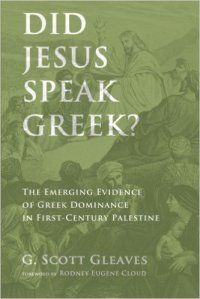Cand.theol. Hilde Brekke Møller delivered today (May 13) the public defence of her PhD dissertation at The School of Theology, Norway. Her thesis is about ‘The Vermes Quest: The Significance of Geza Vermes for Jesus Research.’
 Cand.theol. Hilde Brekke Møller delivered today (May 13) the public defence of her PhD dissertation at The School of Theology, Norway. Her thesis is about The Vermes Quest: The Significance of Geza Vermes for Jesus Research.
Cand.theol. Hilde Brekke Møller delivered today (May 13) the public defence of her PhD dissertation at The School of Theology, Norway. Her thesis is about The Vermes Quest: The Significance of Geza Vermes for Jesus Research.
Ordinary opponents was professor dr. Helen Bond, Edinburgh (1) and professor dr. Craig A. Evans, Acadia, Nova Scotia (2). Professor dr. Karl Olav Sandnes is the third member of the examination committee. The public defense was chaired by rector Vidar L. Haanes.
Abstract:
In recent years, historical accounts of the so-called ‘quest for the historical Jesus’ have assigned an important role to Geza Vermes (1924–2013). Through the lens of his work on the historical Jesus, The Vermes Quest contributes to the on-going debate of how the history of the quest should be written. The primary research question is: What has Vermes’s significance been for Jesus research? Answers to this main research question are sought through the following specific interrogations: What has Vermes’s role been in the coming of the third quest? To what extent and in what ways are Vermes’s suggestions about Jesus reiterated and debated within the third quest?
It is often claimed that Vermes’s book Jesus the Jew. A Historian’s Reading of the Gospels(1973) contributed to a significant change within mainstream Jesus research, typically labelled ‘the third quest.’ Many Jesus scholars, notably E. P. Sanders, J. D. Crossan, J. P. Meier, and C. A. Evans, have interacted with Vermes’s suggestions. However, scholarly assessments of the import of Vermes’s publications are brief and ambiguous. This thesis explores the significance of Vermes’s Jesus research for the conceived change within Jesus research in the 1980s, and also within third quest Jesus research, by looking into the reception of Vermes’s book(s) by Jesus scholars and reviewers.
In Jesus the Jew, Vermes displays how features of the Synoptic Jesus correspond to genuinely Jewish expressions of his time. For instance, he interprets Jesus’s self-reference as “the son of man” in light of a corresponding Aramaic term found in various ancient texts. Above all, Vermes compares Jesus to other miracle workers known to us primarily from rabbinic literature. He suggests that Jesus was a miracle working holy man like them; what Vermes calls a hasid.
Vermes’s attention to the Jewishness of Jesus, his work on the son of man-problem, and hisdescription of Jesus as a hasid have been the most widely discussed parts of Vermes’scontribution. These issues have therefore been chosen for the examination of Vermes’ssignificance. The material for the thesis consists of parts of Vermes’s books that address the selected topics, as well as scholarship from the past forty years that deal with them. The book Jesus the Jew receives most attention due to its prominent role in the scholarly reception of Vermes’s suggestions.
The study demonstrates that Vermes’s significance for the change in scholarship has been overstated. Scholars who did take notice of Vermes’s book Jesus the Jew in the 1970s and 1980s did not present Vermes as initiator or catalyst for change. Further, the study shows that Vermes’s suggestion that Jesus was a hasid has been widely noticed. A few scholars have included parts of the theory in their own portrayals of Jesus. However, a large majority of scholars who discuss the hasid theory have set out to prove Vermes wrong. The hasid theoryhas therefore been widespread, but its significance is limited, since it has not gained wide assent. Similarly, Vermes’s work on the son of man issue has been widely noticed within the debate of this particular issue, but it has had virtually no significance for Jesus research as such, though there are exceptions to this rule.
These research historical explorations of Vermes’s work shed light on underplayed aspects of previous research, and on the state of affairs for recent research. Most profoundly, the study challenges the rhetoric of current scholarship which portrays a dichotomy between recent and earlier research with regards to two matters: First, it takes issue with the purported ignorance of Jesus’s Jewishness within earlier Jesus research (which is believed to have been put right in recent years). Secondly, it challenges the professed (and allegedly unprecedented)theologically disinterested and genuinely historical orientation of recent research.
Her dissertation can be downloaded here: http://www.mf.no/sites/mf/files/users/Dokumenter/Forskning/Doktorgradsprover/2015/hilde_b_moller_the_vermes_quest.pdf







